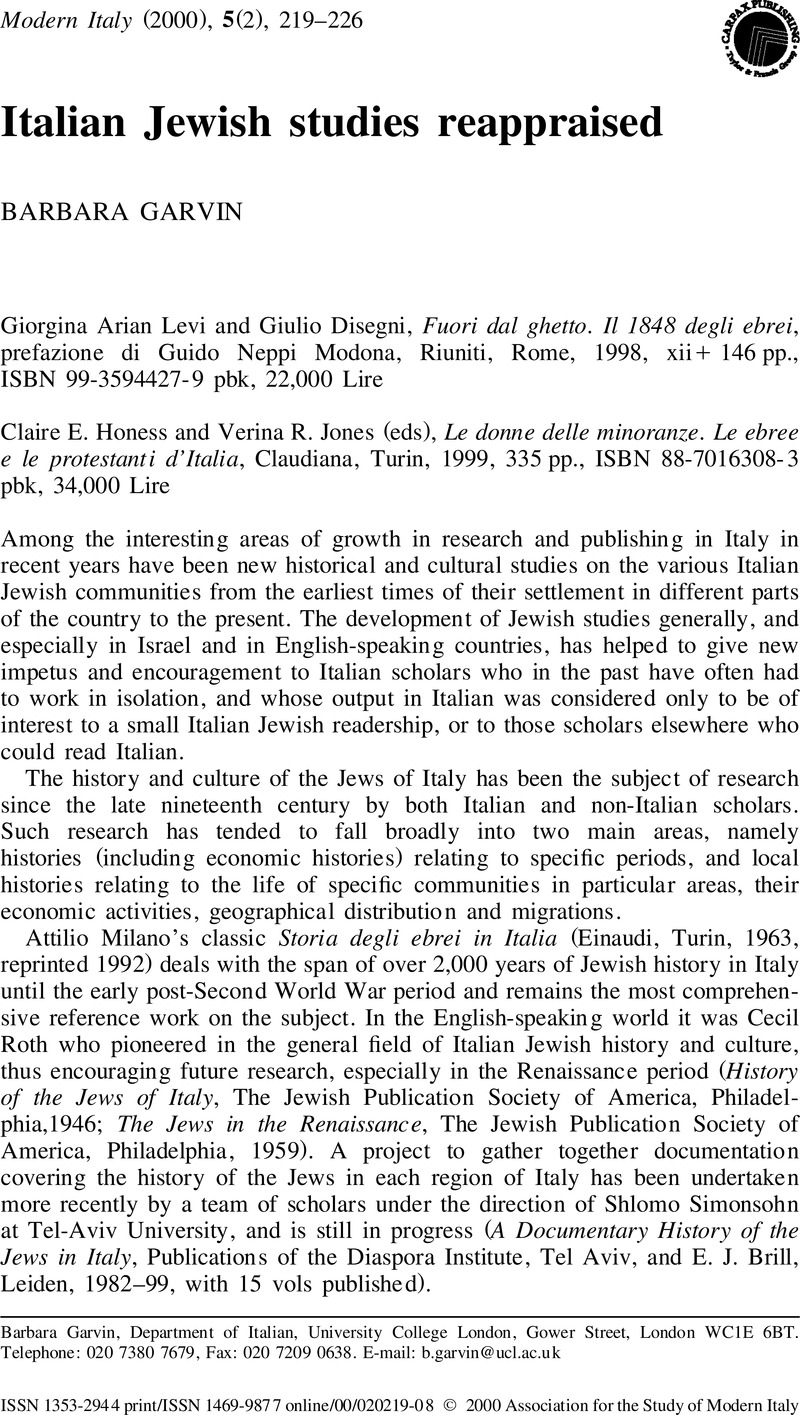No CrossRef data available.
Published online by Cambridge University Press: 18 May 2016

1. Gli ebrei in Italia. Storia d'Italia, Annali, 11, ed. Vivanti, Corrado, 2 vols, Einaudi, Turin, 1997.Google Scholar
2. Without going into the phonological history of the word, suffice it to say that it was used by the exiled Spanish Jews, who arrived in Genoa in 1492, to indicate the area in the harbour where they were enclosed, namely the ‘geto’ or ‘gheto’ (English equivalent: ‘jetty’). See Sermoneta, Joseph, ‘Sull'origine della parola “ghetto”’, in Toaff, Elio (ed.), Studi sull'ebraismo italiano, Barulli, Rome, 1974, pp. 185–201.Google Scholar
3. Il sistema periodica , in Opere, ed. Belpoliti, M., 2 vols, Einaudi, Turin, 1997, 1, p. 747.Google Scholar
4. See, for instance, the bibliography in Bravo, Anna and Jalla, Daniele, Una misura onesta, Franco Angeli, Milan, 1994.Google Scholar